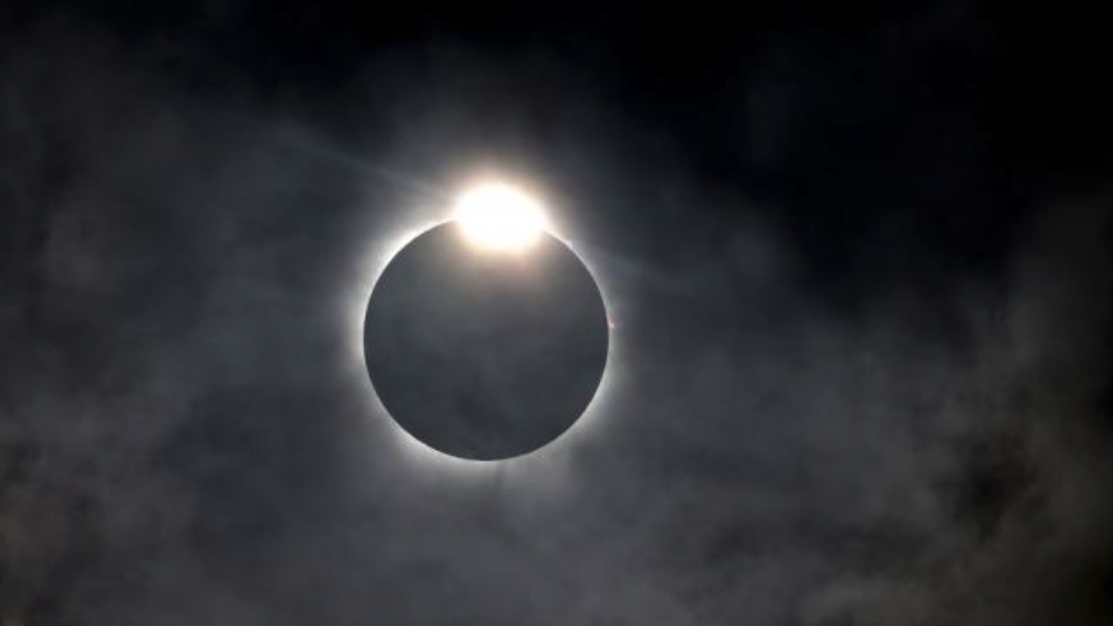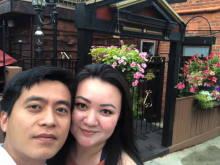Majestic super blood moon observing on May 26
On May 26, people in Vietnam and all over the world admired the stunning the sight of super blood moon
A once-in-a-lifetime astronomical event occurred on August 21st as a total solar eclipse swept across the contiguous United States. Millions of Americans gazed at the sky as the Moon passed between the Earth and the Sun, casting its shadow across fourteen states from Oregon to South Carolina.
The eclipse first made landfall in Oregon before moving inland over Idaho and Wyoming. It entered the US through Madras, Oregon at 10:16am local time. From there, the 70-mile-wide path of totality began its journey eastward across the country.
The path crossed through some of the most populated areas of the Midwest, including Idaho Falls, Casper in Wyoming, and Lincoln, Nebraska. Over 5 million people are estimated to have viewed totality within this corridor where the Moon completely blocked out the Sun. Temperatures dropped noticeably as daylight faded into near-twilight conditions.
Reaching its maximum duration of 2 minutes and 40.2 seconds over Karoun, Illinois, the Moon's shadow then raced across the Mid-Atlantic states. Major cities like Nashville, Cincinnati and Louisville witnessed the Moon take a huge bite out of the Sun. By 2:46pm, totality emerged over Jefferson City, Missouri.
Millions in the path of totality mobilized to experience this spectacular phenomenon. Families packed up their cars and hit the road, often traveling for hours to position themselves directly under the Moon's shadow. Makeshift viewing parties sprouted up all across parks, fields and highways. Special eclipse-related festivals and events drew huge crowds as well.
The eclipse then carved a path through some of the most historic parts of the United States. It crossed over St. Louis at around 3pm local time before slicing through southern Illinois at 3:28pm. The towns of Carbondale and Marion found themselves in the middle of totality for 2 minutes and 40 seconds, the maximum possible time.
As afternoon turned to dusk, totality arrived in Kentucky and Tennessee around 4pm. Over 100,000 tourists poured into Hopkinsville, billed as the "Eclipse Crossroads of America", to observe from beneath a clear sky. Further east, the shadow raced over Virginia and reached maximum coverage over Newport News at 4:33pm.
New England also witnessed the eclipse, with totality sweeping across portions of Massachusetts, New Hampshire, Vermont, Maine and New York between 1:23pm to 4:00pm local time. The dense populations of Boston and Portland meant huge crowds turned out with special viewing glasses. The shadow departed New England near Salem, New Hampshire around 4pm.
The event concluded as the Moon's umbra crossed the Atlantic seaboard and made its final landfall over Charleston, South Carolina at 2:48pm local time. NASA satellites and ground-based telescopes captured stunning images of the solar corona exploding out from the darkened Sun during totality.
The US eclipse was especially significant given its wide accessibility across heavily populated areas. An estimated 7.4 million people experienced totality within the path of maximal coverage that spanned from Oregon to South Carolina over the course of 98 minutes. Outside this corridor, hundreds of millions viewed a partial eclipse across the continent.
The event drew immense interest from astronomers, skywatchers, and the general public. People began flocking to prime viewing spots days in advance in order to secure good seats. Official NASA travel forecasts indicated Americans would commute a combined 188 million miles to observe the eclipse from the path of totality.
With about 20 years between total solar eclipses visible from any given location, the 2017 eclipse was a once-in-a-lifetime opportunity for many. It was the first visible coast-to-coast eclipse in the continental US since the late 19th century. The last comparable eclipse occurred in 1918, during World War I, when photography and other scientific studies were not as advanced.
As the umbral shadow passed off the East Coast that afternoon, it marked the end of the natural spectacle. But the images, scientific data and shared experiences will long outlive the fleeting moments of totality beneath the Moon's silhouette. For thousands who witnessed darkness at midday on August 21st, 2017, it was a sight they will never forget.

